Cold War/Modern Spanish Tanks & AFVs
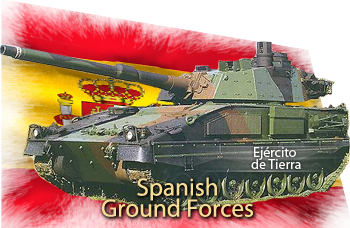 Ejército de Tierra de España
Ejército de Tierra de España About 2,200 armoured vehicles 1945-2023.
Models
AMX-30EM60E
M47E
M48E
M41E
Pegaso BMR
Pegaso VEC
ASCOD Pizarro (1992)
CZ 10-253 Alacran CEV*(TE)
VBTT E4*(TE)
VBCI-E Yagüe APC*(TE)
VBCR Monasterio*(TE)
Evolution of the Spanish Army
Context Before 1945
After three years of brutal civil war that left vivid scars up to this day, Spanish tank development was still ongoing when world war two erupted, despite a strong neutrality and Hitler's approaches to try to bring Franco into the axis. Hitler's desperate attempts all but failed, the last meeting at Hendaye in 1940 only left him to declare "I would rather pull out all of my teeth than trying this again".Spain had in 1944 an ongoing domestic tank program started in 1939, the Verdeja, and received many German tanks before the end of the war. In addition from 1945 to 1954, there were 22,000 officers, 3,000 NCO and almost 300,000 soldiers in service but equipment and training were still lagging behind experienced armies during ww2.
In Short, until 1953, the Spanish Army relied on very little equipment. It was mostly an infantry army, with an obsolete artillery and half of its infantry batallions motorized, thanks to its local truck manufacturer Pegaso. Twenty Panzer IVHs and ten StuG IIIGs were supplied to Spain in December 1943, very few compared to what Franco asked for. The former was the very best Spain had between 1944 and 1954, joining a collection of T-26s, Panzer Is and the few remaining Renault FTs dating back from the Morrocan Campaign, for those not destroyed in 1936-39. None of the few improvized armoured cars designed and built in that era was usable, nor the few tanks produced sich as the Trubia or Landesa. Spain later sold 17 Panzer IVs to Syria in 1967, remaining were kept at gate guardians or museum piece in Madrid, Burgos and Santovenia de Pisuerga near Valladolid. About the Spanish Stug-III Gs, very little is known about their whereabout. They served with the Alcazar de Toledo unit, and were also sold in 1967 to Syria.
As early as January 1944, negotiation with Germany for more revolved around the sale of 33 Panzer IVs, including three of the command variant and 67 more Panzer IVs at a later date for circa 100 Panzer IVs. Spain even suggested the purchase of a few Tiger tanks to constitute a "special unit", but the German staff brushed it aside given the rarity of it and great need at that stage. The program never materialized and Spain was left with the 20 Panzer IVs received in late 1943, organized into two companies, each given to battalion in the sole armored regiment of the Armoured Division No.1 "Brunete".
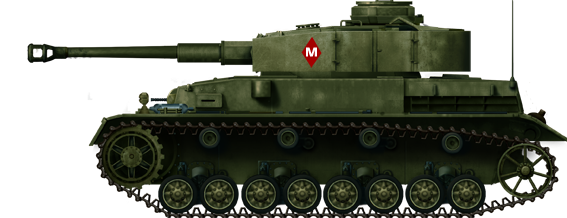
Panzer IVH 1948 Regiment de Carro de Asalto "Alcazar de Toledo" N°61
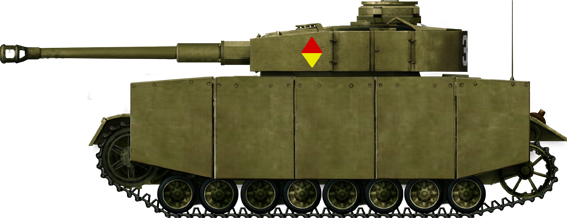
Same, with up-armour and Khaki livery
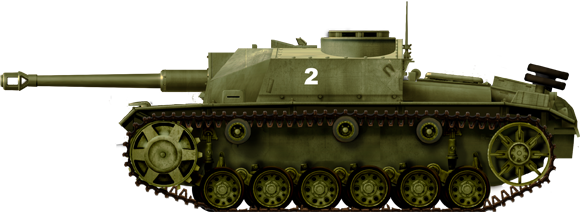
STUG-IIIG 1952 EATA (Gunnery School)
This after 1945, the Spanish Army had 20 Panzer IVs, 10 StuG IIIs, completed by 116 T-26s, 93 Panzer Is, including command vehicles, 60 CV-33s and 80 armored cars, which was barely sufficient to protect the country against any invasion. In 1949 this armored regiment was reorganized into two battalions (60 T-26s each) headed by two Panzerbefehlswagen-I, six Panzer I and two CV-33 making for the reconnaissance arm of each batallion. While the third battalion was composed of the 20 Panzer IVs, but also six Panzer Is used also for screening. It culminated at 1,500 personnel and 100 tanks in 1950.
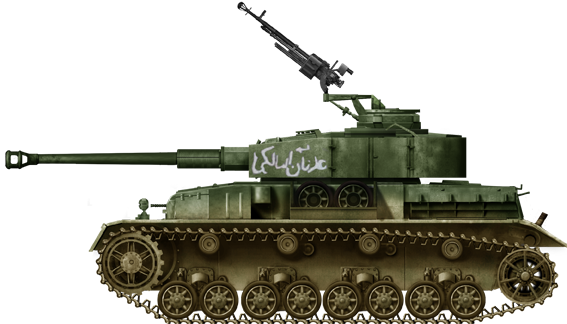
Syrian Panzer-III Ausf H, war of 1967.
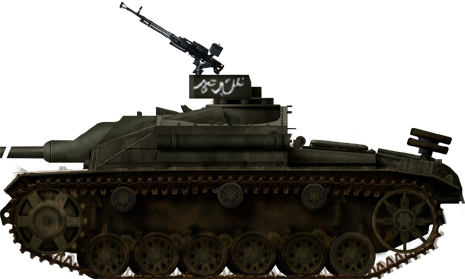
Syrian STUG-IIIG, war of 1967.

In El Goloso Museum, a collection of early Spanish Tanks.

C-15TA ‘Trumphy’ in the Spanish Sahara. Over a 100 WW2 Canadian surplus C15TA Armoured Trucks arrived in Spain in 1947. They started to be replaced by the M113 in the late 1960s and until 1973.
1953 agreement with the USA
Conservative Spain of the 1950s was naturally opposed to the Soviet block and negotiations with the USA led to a de-facto military aid program agreement. However Spain joined only NATO in 30 May 1982 after the change of regime to a democratic one. After the initial aid program, Spain received relatively larges supplies of M47 and M48 Patton tanks. These were however assorted with a condition not to be used in the war with Morocco. Franco then thought to acquire tanks from other sources. Negotiations with Germany failed and its constitution did not allow exports to undemocratic countries but eventually succeed with France. The third MBT type to enter service (also used in Morocco) was the AMX-30, built under licence as the AMX-30E.For the infantry, situation also improved with assistance received from Washington and 300 NCOs trained in the USA on a yearly basis. With the Barroso Reform (1957) a US-based Pentomic structure was adopted for the Army. Three experimental Pentomic Infantry Divisions were created the following year, five more in 1960, plus four mountain divisions. Pentomic structures were raised in 1957 in the US due to the perceived threat posed by tactical nuclear weapons use on the battlefield and comprised airborne, armoured, and infantry units integrated into five subordinate units.
1960s reforms
With the Menéndez Tolosa Reform in 1965, Spain began to adopt the contemporary French organisation and Doctrine of the era, perhaps mirroring the adoption of the AMX-30 as its new MBT. The Ejercito was divided into a Field Army and a Territorial Army, the former being well-trained and equipped for immediate interventions, including abroad. The IIF (FA) was to answer critical sectors such as Gibraltar and the Pyrenees mountains border. The field army comprised an Armoured Division (two Brigades), a Mechanised Division (same), a Motorized Division, a Parachute Brigade (1973), an airborne Brigade, and Armored Cavalry Brigade and Army Corps support units.The ODF (TA) units of the territorial army was in charge of maintaining security, reinforcing the Civil Guard and assist the police in anti-terrorist duties. It comprised 9 independent TA Infantry Brigades, 2 Mountain Division, 1 Mountain Reserve HQ, the Island TA and General Reserve Command.
Pegaso, a National Champion

Pegaso ("Pegasus") was a Spanish manufacturer of trucks, buses, tractors... and armored vehicles. Its parent company Enasa was created in 1946, taking over Hispano-Suiza founded by Wifredo Ricart. It became a state-owned company and one of the leading European industrial vehicle makers with an important export market in Latin America. But one of its most important contract was with the Egyptian Army in the late 1970s for military trucks. A full article will be made soon on truck-encyclopedia.com
Main Enasa factories were located in Barcelona, Madrid, and Valladolid and between 1946 and 1990, 350,000 vehicles came from it. The first Enasa truck was a slightly modified Hispano-Fiat 66G ("Pegaso I") made in 1946-1947. It was followed by the Pegaso II (Z-203) launched late in 1947 while the 125 hp (93 kW) Pegaso Diesel Z-202 'Mofletes' (1949) quickly made the number one Spanish truck tractor. To boost its image, Pegaso also more surprisingly sold hundred Z-102 sports cars in the 1950s, featuring a 5-speed rear-mounted transaxle and all-aluminum DOHC engines, custom-wrapped in Touring, Saoutchik, Serra, or Enasa's own bodies... and fastest production car in 1953 Spain at 155 miles per hour (249 km/h).
 Fast forward and apart cars and buses, the company also touched on the off-road segment with a caterpillar tractor based Italian Vender 4x4 chassis from 1957. The company soon added to its already large catalog crawler tractors, bulldozers often badged "EMPRESA" and buit in Barcelona. The company also started its first based mobile cranes. The latter came in 6WD/8WD/10WD axles distributed through LUNA brand. The company participated to the 1960s-1970s, economic development of Spain ("Spanish miracle"), boosting through export the Spanish economy and soon rearch the European Market with equal success despite a highly competitive market. Reliable and cheap, they soon dthroned FIAT trucks in some niche markets. As far as 2011 tractor for semi-trailers were still built and it also expanded into railway vehicles. In 1968, Enasa (Pegaso) took over S.A.V.A. (local Rootes brand), soon rebadged as Pegaso.
Fast forward and apart cars and buses, the company also touched on the off-road segment with a caterpillar tractor based Italian Vender 4x4 chassis from 1957. The company soon added to its already large catalog crawler tractors, bulldozers often badged "EMPRESA" and buit in Barcelona. The company also started its first based mobile cranes. The latter came in 6WD/8WD/10WD axles distributed through LUNA brand. The company participated to the 1960s-1970s, economic development of Spain ("Spanish miracle"), boosting through export the Spanish economy and soon rearch the European Market with equal success despite a highly competitive market. Reliable and cheap, they soon dthroned FIAT trucks in some niche markets. As far as 2011 tractor for semi-trailers were still built and it also expanded into railway vehicles. In 1968, Enasa (Pegaso) took over S.A.V.A. (local Rootes brand), soon rebadged as Pegaso.
On the military side, the company naturally soon proposed a new tactical truck to the Ejercito, the 1963 4x4 Pegaso 3020, replaced in 1970 by the 3045 and 6x6 3050. Next came the 170 hp (130 kW) 3046 and 200 hp (150 kW) 3055, which entirely equipped the Spanish Army until the 1980s and ddeath of "el caudillo". The 3046 was even greeted by an order for 10,000 units by the Egyptian Army. The 3046 "Egipcio" ("Egyptian") became also a popular fire and forest servuce truck. Naturally the company expanded its military catalog to lighter four armoured vehicle models: The 4x4 airborne 170 hp (130 kW) 3545 BLR (a light utility car), and the 4x4 amphibious 170 hp (130 kW) 3550 VAP (the Spanish DUKW), or of course its fist truly armoured vehicle, the very successful 6x6 306 hp (228 kW) 3560 BMR and its derivative 3562 VEC (turret armed IFV) adopted by the Spanish Army and replacing older models.

Pegaso 3046 Military Truck of the Ejercito
In the 1980s ENASA started to suffer from the saturation of the European truck market and tried to joint venture other truck makers. One in 1978 with International Harvester failed and the company turned instead to British Seddon Atkinson, creating a new subsidiary Pegaso Agrícola for IH tractors and agricultural machinery. A partnership with Perkins Engines led to "Pegaso Motor" in Spain to built, assembled and sell exclusively these engines in Spain. CALSA (Zaragoza) also appeared for offroad tractors and loaders but it became independent in 1990. A joint venture with DAF Trucks (Netherands) produced the series 95, while appeared also the Seddon Atkinson Strato. But in 1990 the company was jointly abssorbed by Daimler-Benz and MAN during a consolidation. Next came the take-over by Iveco ans as of July 12, 1994, the last Pegaso Troner truck left the production line at Barajas near Madrid while the last engine was made in 1995 while Pegaso became a secondary brand of Iveco but only exists as such. The Company is officially defunct in 1994. Production, modernization and maintenance of the military vehicles was taken over by Santa Barbara Sistemas.
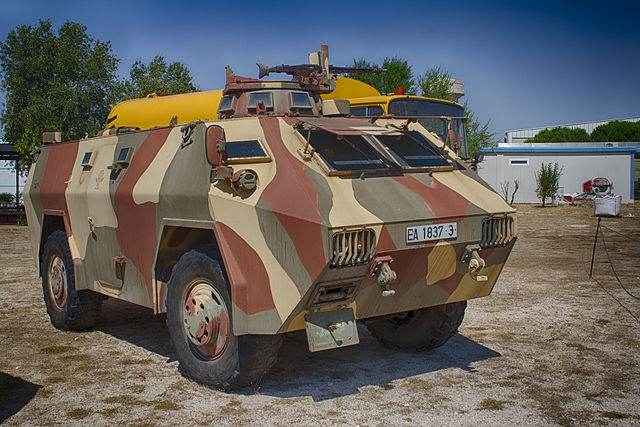
The rare Pegaso BLR
The BLR, in part inspired and based on elements of the Thyssenkrupp Henschel UR-416 was produced as a 4x4 light APC by ENASA/Pegaso and Santa Bárbara Sistemas. Weighting 9.6 ton for 5.65 x 2.5 x 2m in size, it carried a driver and co-driver/gunner (MG-3S 7'62 mm LMG.) and 13 infantry in the rear compartment. It was powered by Pegaso 9100/41 6 cyl. 0170 c.c. (118x155 mm) 170 CV diesel, for 80 km/h and 570 km range, coupled with a 4-speed gearbox. 20 were delivered from 1980, used for military airbases protection and replaced later by the URO VAMTAC. It seems it was also used by Venezuela and the Spanish Marines. See also.
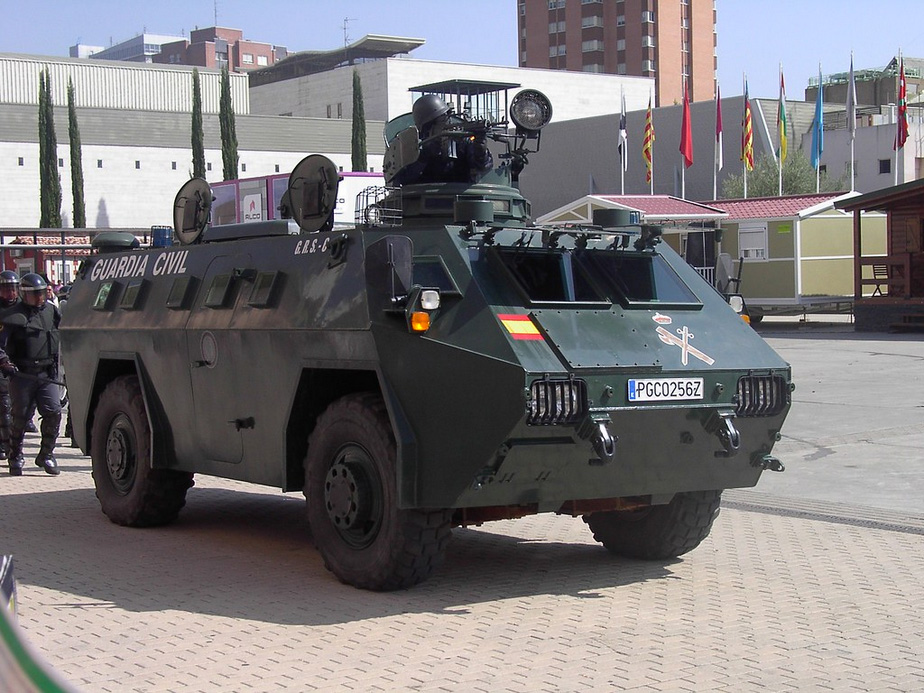
The rare Pegaso BLR
The Pegaso BLR 600 is still used by the Guardia Civil.
Santa Bárbara Sistemas, Spanish Military Specialist
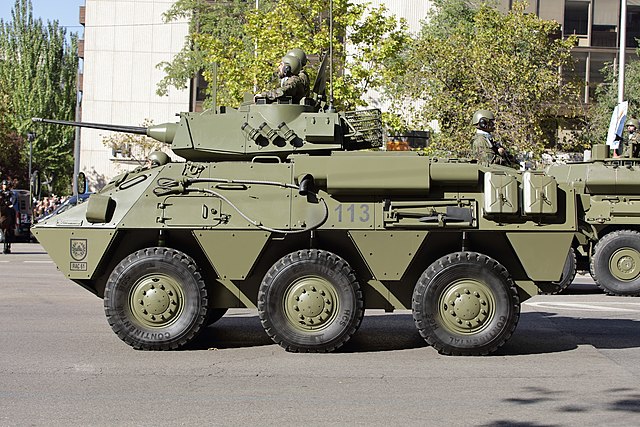
The Spanish IFV, VEC M1 is still in service today, upgraded and maintained by GDLS (ex-Santa Barbara Systemas).
Santa Bárbara Sistemas is a central defense contractor based in Madrid, Spain, now part of GDLS (General Dynamics Land Systems). Is one of the principal contactor of the Ejercito. The amain factor is located at Alcalá de Guadaíra in the province of Seville, and Trubia (Oviedo) which in the past serially produced the "naval tank" on behalf of the Republicans during the civil war. Santa Bárbara Systems is a giant responsible of armored vehicles, special vehicles and weapons & associated systems as well as ammunitions as well as R&D. It had a great importance in upgrading Spanish Tanks in the 1980s.
Despite its name seems to indicate, this company inherits probably one of the oldest weapons manufacturers in Europe. It can trace its roots with cannon manufacturing in the 14th century. It is linked to the Royal manufacture of Málaga since 1511, headquarters in the shipyard building. In 1540 the Juan Morell foundry in Seville also started production of cannons for Carlos V, and became property of the crown in 1643, becoming the Royal Artillery Factory of Seville, providing the Armada and Ekercito its artillery until 1717. The commander of the Seville Artillery was appointed director. In 1932, this Seville factory wa smerged into the "Consorcio de Industrias Militares" until 1959, and later by the Empresa Nacional Santa Bárbara, an industrialist which integrated this military branch. The factory closed in 1991.
Manufacturing moved in 1958 to Pedralonga, La Coruña. In 1961 it integrated Santa Bárbara notably producing the Spanish Army CETME 7.62 rifle and in 1984 its replacing CETME 5.56 rifle. In 1986 it also produced the Ameli 5.56 submachine gun. In 2001 the acquisition by General Dynamics was linked to the start of production of the German HK G36-E rifle and by 2007, Spike LR missile (with Rafael Advanced Defense Systems) as well as APU SBT howitzer and parts of the Leopard tank (Leopard 2E) as well as the Pizarro IFV also made at La Coruña. After the closure of the La Vega factory in Asturias, production of the Mauser MK-30 cannon and the LAG 40 grenade launcher also ended at la Coruña, whereas the site was massively expanded, with a brand new information and communication technology (ICT) innovation center.
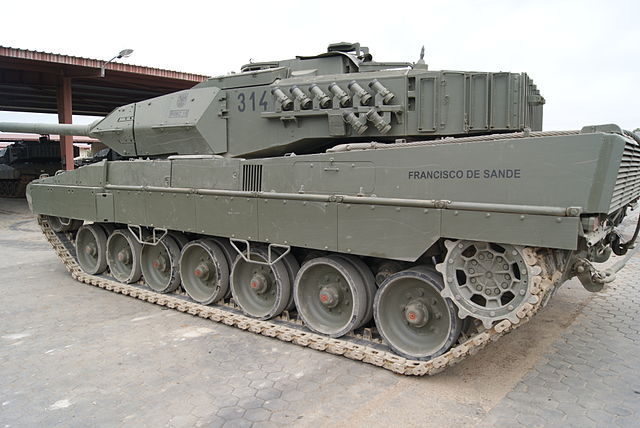
Leopard 2E made by Santa Barbara Sistemas as part of GDLS.
As for tanks, In 1983 Santa Bárbara had two factories for ammunition and fuzes, but also one for artillery and tanks which merged in 1984. In the 1970s, the former Royal Artillery Factory of Seville located at Las Canteras de Caballería (Alcalá de Guadaíra) close to a military camp saw the local assembly of the French AMX-30E (under licence from GIAT), with 34 modernized in the "Lince" Programme from the late 80s to early 1990s. In 1993, the Santa Bárbara Armored division was created. It was to manufacture combat tanks and modernize the M60 in Spanish Service. In 1999, the State agreed to manufacture 219 Leopard 2E at Alcalá de Guadaíra with the first seven delivered in 2004. In 2001, the company won a contract over Krauss-Maffei and Rheinmetall and became "Santa Bárbara Sistemas" after acquisition by General Dynamics to start production of components for the M1 Abrams battle tank, Marine AAAV landing craft, LAV-III at Trubia factory and from 1996 the complete manufacture of 144 ASCOD Pizarro in joint venture with Steyr-Daimler-Puch Spezialfahrzeug of Austria. The Trubia factory specialized in amphibians and LCTs fpr the Armada, but also armored vehicles. In 2014 the British MoD contracted the construction of 589 ASCOD Pizarro, partly made at Trubia, but also 584 Scout SV Ajax IFVs, derived from the Pizarro. This is the largest armoured vehicle order ever registered in Spain so far, after 1,400 BMR vehicles by Pegaso in the 1980s.
1980s reforms
Transition after the death of Franco to the Spanish King Juan Carlos led to a progressive but resolute set of reforms. Culturally the movement was also known as the "movida". The Army was concerned from 1977 on (single ministry of defence), and standardization needed to access to NATO in 1982. The META modernization plan set until 1988 was to affect military regions, reduced in the mainland from 9 to 6, the IIF (FA) and the ODF (TA) commands merged into a single structure, the total number of brigades being reduced from 24 to 15 and personal reduced from 279,000 to 230,000.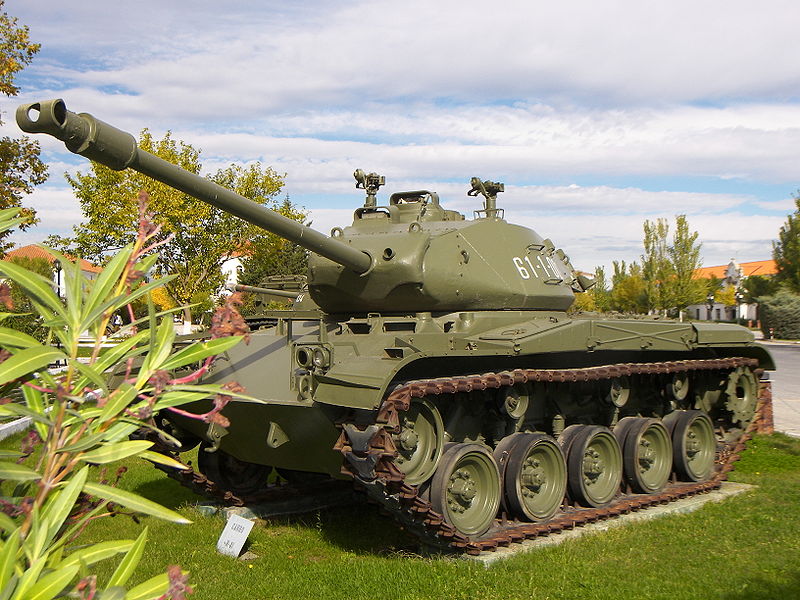
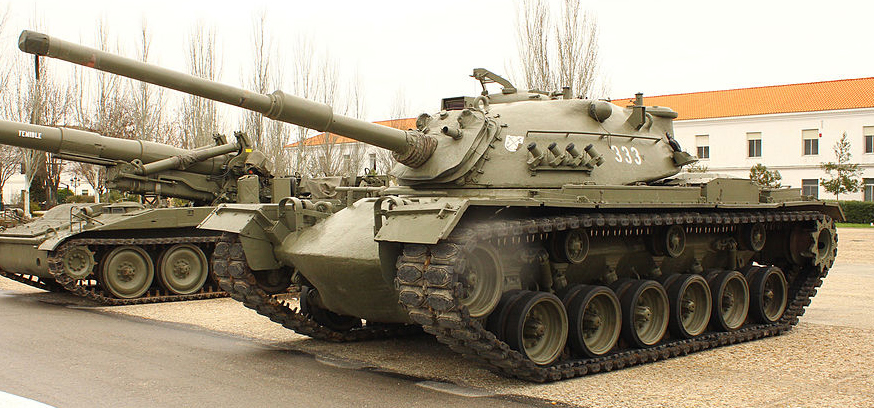
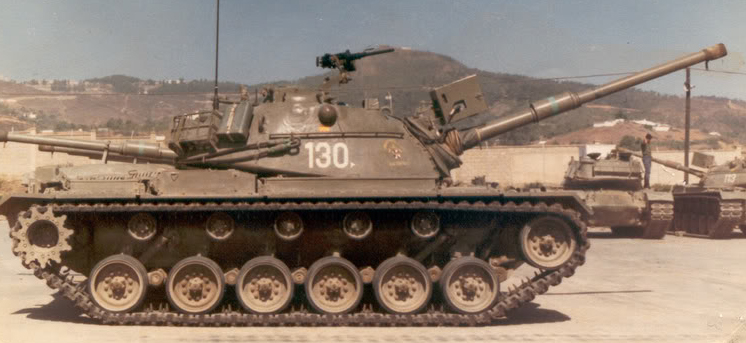
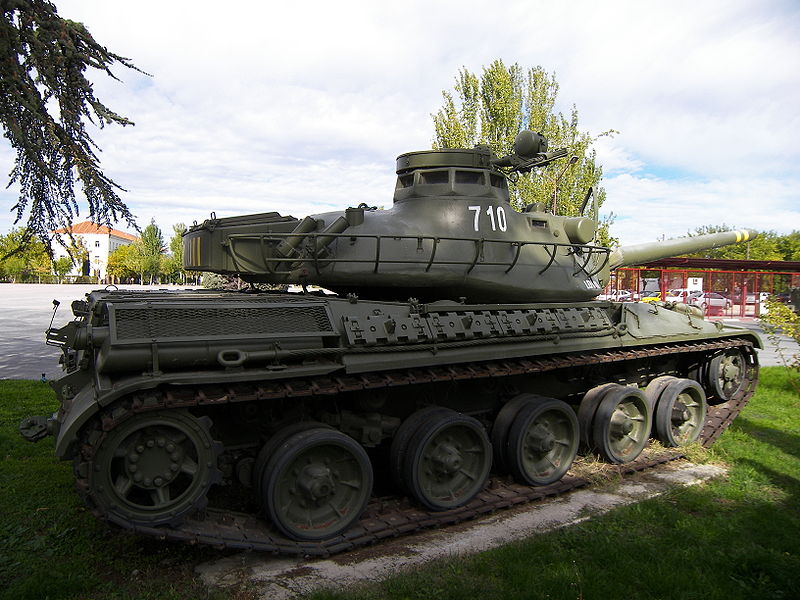
 1980s Lince tank program
1980s Lince tank program

The "Lynx" was an attempt to replace its ageing M47E and AMX-30E (built under licence) in service by a more modern tank in the 1980s. Both the M1 Abrams and Vickers Mark 2 were also proposed in purchase but licence production was refused. Eventually, the Spanish government obtained collaboration from KMW, the makers of the Leopard 2 and 120 Billion Pesetas were granted to the Lince MBT project in 1984. 200 Billion were added in 1987, and a single working prototype was tested but eventually the whole project was cancelled in 1987 when it was decided to modernize the AMX-30 into the EM1/EM2 versions and purchase cheaper M60s in complement.
The Lince is a quite shadowy tank, with no blueprint, just a single photo and low resolution profile being available on the net. It was in fact very close to the Leopard 2A4 type, but with some substantial differences tailored to Spanish specifications: First, the Lince was lighter at 49 tons, compared to 55 for its German counterpart. It was propelled by a MTU MB 871 Ka 501 V12 diesel with 1200 hp for about 24.5 hp/tonne. It had the same Renk automatic transmission. It was faster than the Leopard 2 yet with advanced composite armor. Prospect for production was to add spall liners, NBC system with overpressure, automatic Halon fire suppression system, and belly escape hatch for crew safety. Ammunitions were stored in the turret bustle with blow-off panels. The Lince MBT was armed with the same NATO-compliant Rheinmetall L/44 120mm smoothbore and two secondary machine-guns, either GMPGs or MG3s. Estimated price was to be around $1.5 Million apiece. Eventually Spain chose to participate instead in the development of the Leopard 2, and purchased 108 2A4s (at first in leasing). This would led to the procurement of 220 Leopard 2E (Leopard 2A6).
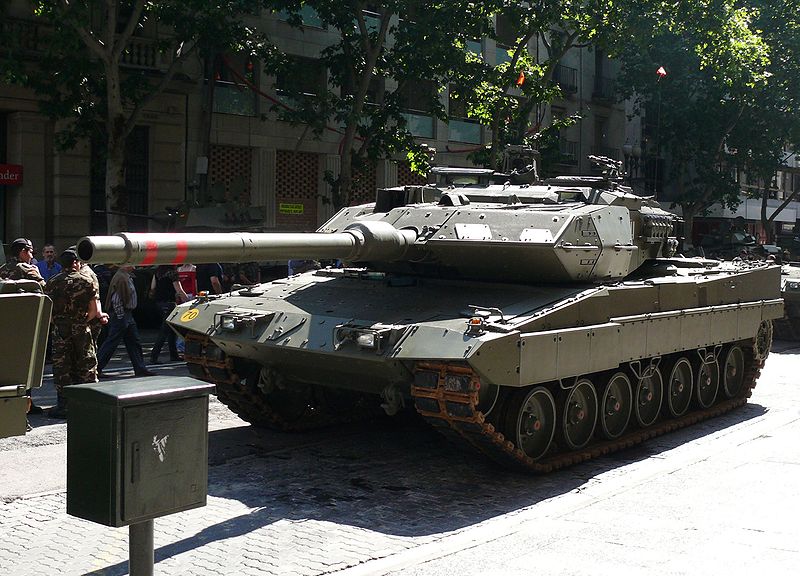
Leopard 2E at Zaragoza.
1992's modernization of the Spanish Army
Despite modernization, the abandon of the Lince program led to a first prospect of replacing the M60s and modernized tanks with a new domestic or semi-locally assembled model, in 1994. The Programa Coraza 2000 (Program Armour 2000) was set up by the MoD. Negociation started with Germany which at first proposed to sell refurbished Leopard 1s and ex-soviet models standardized, but the offer was rejected and instead 108 Leopard 2A4s were leased in late 1995s to evaluate and train personal for a future local production of the Leopard 2E for a five-years period. The final Memorandum of Understanding of 9 June 1995 saw the leasing transformed as procurement for 16.9 million euros, and a licence production for 219 Leopard 2E, based on the latest 2A6 version. The latter were procured in 2003-2008. The other programme was to replace the AMX-30s in service with 84 B1 Centauro wheeled tank hunters acquired in Italy.An important move for the Army was also to abolish service for conscripts in 2001. Other changes of structures were helped by increasing participation in multinational peacekeeping operations. This was accompanied with the RETO plan (1990), NORTE plan (1994) and Instruction for Organisation and Operation of the Army (IOFET) in 2005. By 2008 the Spanish Army personel is reduced to 75,000. Howver some 80,000 Civil Guards are under supervision of the Ministry of Defence command and could be trained/equipped quickly in case of a full mobilization.
The ASCOD Pizarro
Perhaps old Habsburg ties contributed to the Austrian Spanish Cooperation Development (ASCOD), the latest and most interesting armoured development In Spain recently. Although the Pizarro is not a fully fledged MBT, but an IFV, it's a good step in the direction of further, more important developments. The Pizarro was meant to replace older fleets of APCs and IFVs like the M113s. Indeed Austria also equipped with Leopard 2s needed also a complementary vehicle.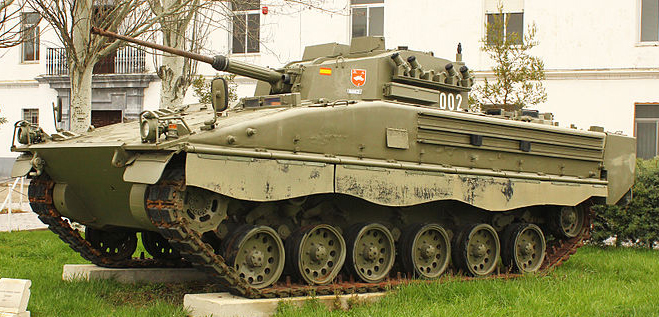
First 1992 prototype preserved at El Goloso museum.
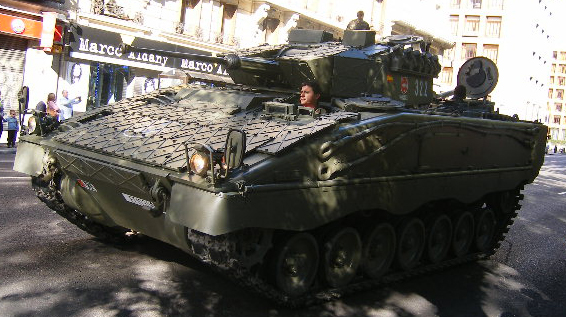
In Austria, this IFV is called Ulan. According to the final agreements and industrial structures, the hulls are manufactured in Spain, and the turret and some sub-equipments by Steyr in Austria. The first prototype was presented in 1991 in Sevilla and tested by 1992. Production started by 1996 but the Pizarro did not entered service before 2002. A sound design, the Pizarro has been since also ordered by the UK, for the common base Ajax (Scout SV).
See also:
Spanish Tanks of the Interwar
Cold War Spanish Models
 M60E
M60E
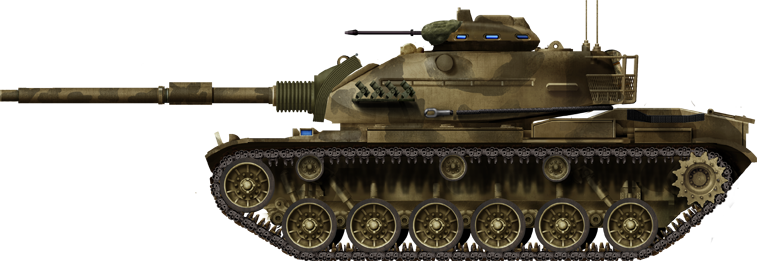
M60 In the early 1990s, Spain received from the US a complement of 244 M60TTS to supplement its ageing fleet of M48/M47 and AMX-30EMs, out of a total of 300 M60s of all variants. An upgrade by Santa Barbara consisting in a local reactive armor (SaBBliR, Santa Barbara Blindaje Reactivo, also developed for AMX-30s) was envisioned. But in the end, no M60 was modernized, the Leopard being adopted instead. As of today, the Spanish Army retains specialized variants, 38 M60CZ-10/25E, 12 M60VLPD-26/70E and the Infantería de Marina 17 M60A3TTS, the others are in reserve. The M60CZ-10/25E Alacran is a combat engineer variant conversion.
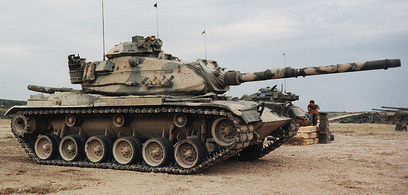
Spanish M60A3 TTS (Flickr)
 M48E
M48E
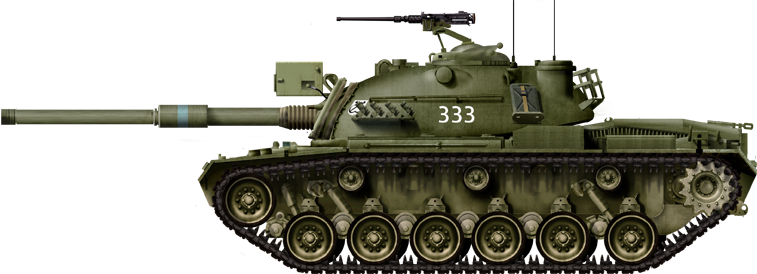
M48E Patton Modernized version of the M48 Patton. In total, 164 M48A5E were retained in service until the 1990s. By the 1990s indeed both the M47E and M48E were nearer to the M60 in terms of capabilities. Versions:
M48A5E: 1978-79, M48A5 variant, 105 mm gun with M17B1C optical rangefinder. M13A4 ballistic computer, IR/white light projector over main armament.
M48A5E1: improved M48A5E.
M48A5E2: 1981–1983. Hughes Mk7 DCS with laser rangefinder, solid state ballistic computer, passive IR vision, Urdan cupola. 164 upgraded to this standard, retired in 1997.
M48A5E3: (1991) Prototype only with thermal sights, main gun full stabilization, program cancelled in 1993.
 M47E
M47E
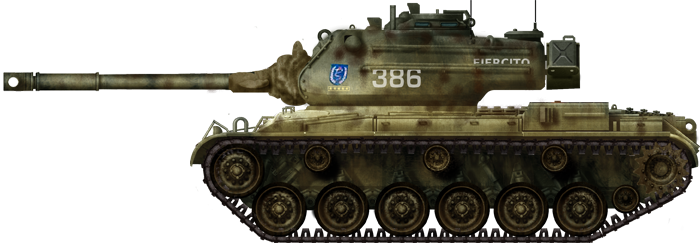
M47E Patton Modernized version of the M47 Patton.
22 M47ER3 ARV based on M47 hulls were modernized in 1992–94 and are currently used as recovery vehicles in artillery and infantry units whereas the regular serie is long discarded or only maintained for spare parts.
 M41E
M41E
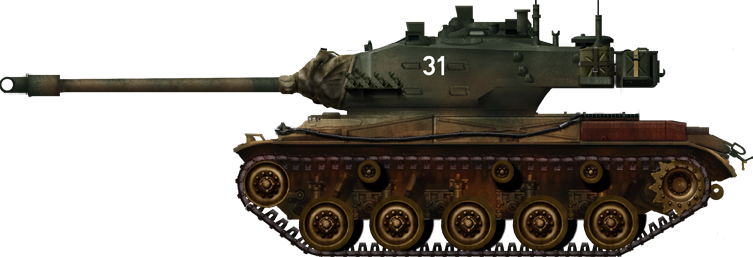
M41E Light tank acquired in the late 1950s upgraded to the M41A3 standard: Their engines were upgraded to fuel injection.
 AMX-30E
AMX-30E

AMX-30E Here a modernized AMX-30EM2 (Note: Incorrectly illustrated with a coaxial 20mm gun). The AMX-30E was built by Santa Barbara Sistemas but had to cope with reliability issues linked to its original engine and transmission. The modernization was decided after the abandon of the Lince programme in 1989, a modernization programme was geared up, with 150 AMX-30Es being fully upgraded. Modifications included a new APFSDS round, modification of the turret hatch ton install a cal.50 HMG or similar heavy weaponry, and a locally developed fire control system. Moreover the original engine was replaced by a MTU 833 Ka-501 diesel engine (850hp/630 kW) coupled with a ZF LSG-3000. A new smoke generator was also installed. The remainder 148 AMX-30 were modernized less extensively as the AMX-30EM1s with American Allison CD-850-6A three speed transmissions, but were replaced early on with M60s.
 M113
M113
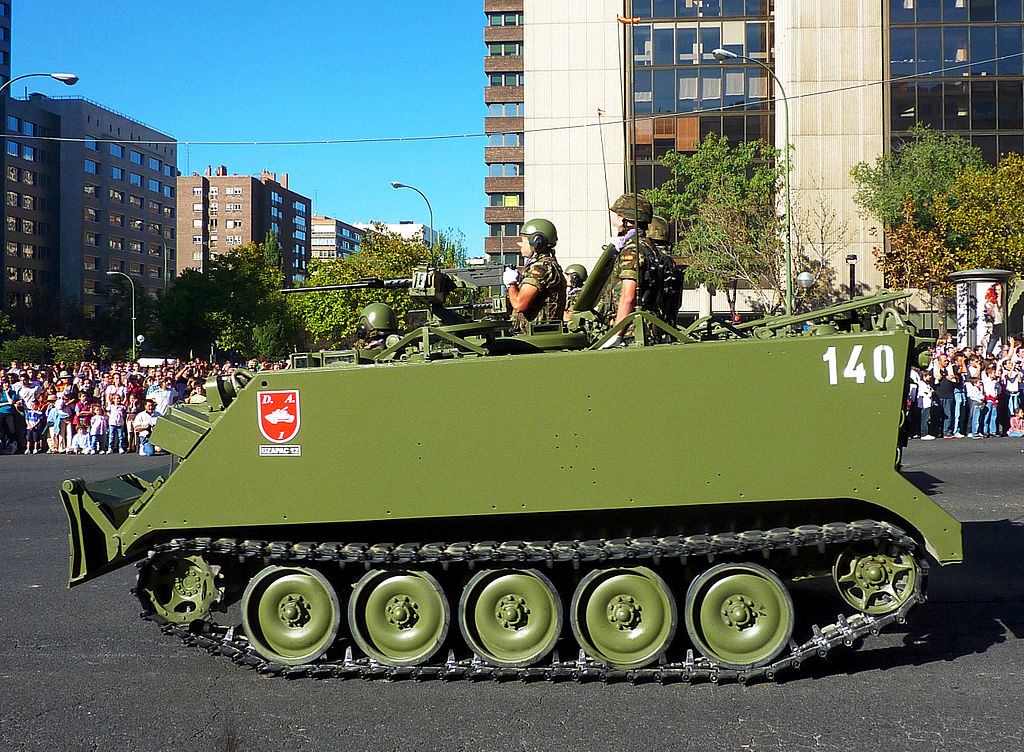
M113 Spanish M113 APCs. 500+ are retained in service in several variants.
 M109
M109
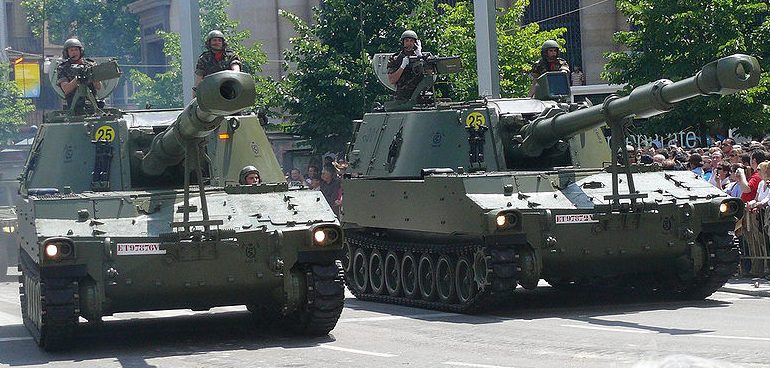
M109 Spanish M109A5 self-propelled artillery systems. Today, 96 are in service.
 Pegaso BMR-600 (1979)
Pegaso BMR-600 (1979)
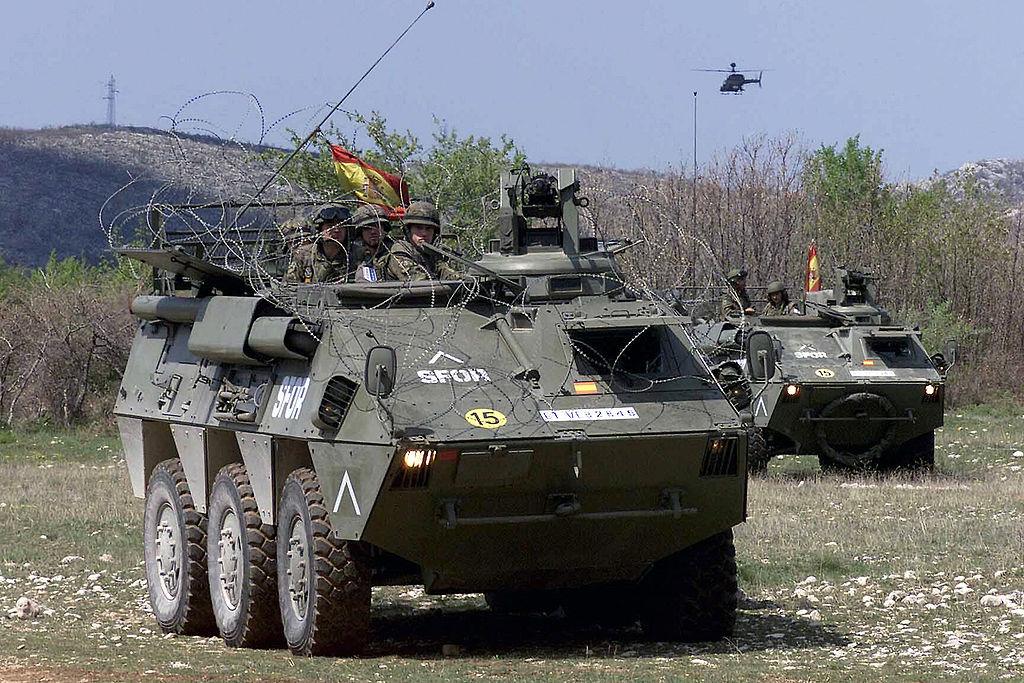
Pegaso BMR/M1 Spanish main wheeled APC. Pegaso is a major Spanish truck and vehicle manufacturer since the 1950s. Following a introduction in 1979, the Pegaso 3560 BMR was defined as a fast wheeled 6x6 APC. So far it has also been developed into a dozen variants and exported to Egypt (260), Mexico (7), Peru (20), Saudi Arabia (200), and Morocco (100). The model was so successful that it became instrumental for all external peace keeping interventions of the Spanish Army. It also was chosen as the basis for the Austrian Pandur I. 648 are currently in service with the Ejercito.
The Pegaso BMR (Blindado Medio sobre Ruedas) is an armored fighting vehicle developed and manufactured by the Spanish company ENASA (Empresa Nacional de Autocamiones S.A.), later known as Pegaso and later as Iveco España. The BMR was designed to meet the needs of the Spanish Army as a multipurpose armored vehicle. The Pegaso BMR was introduced into service in the mid-1970s and has seen use in various variants, including troop transport, ambulance, command and observation vehicle, mortar carrier, and recovery vehicle. The design of the BMR is characterized by its 6x6 traction, which gives it good mobility both on difficult terrain and on roads.
The vehicle is equipped with an armor system that provides protection against ballistic and explosive threats. It also has communication and navigation systems to facilitate the coordination and deployment of troops. Over the years, the BMR has been used by the Spanish Army in various missions and international deployments. Although it is a veteran vehicle, it is still in service with some units, although it has also been gradually replaced by more modern vehicles.
 Pegaso VEC (1980)
Pegaso VEC (1980)
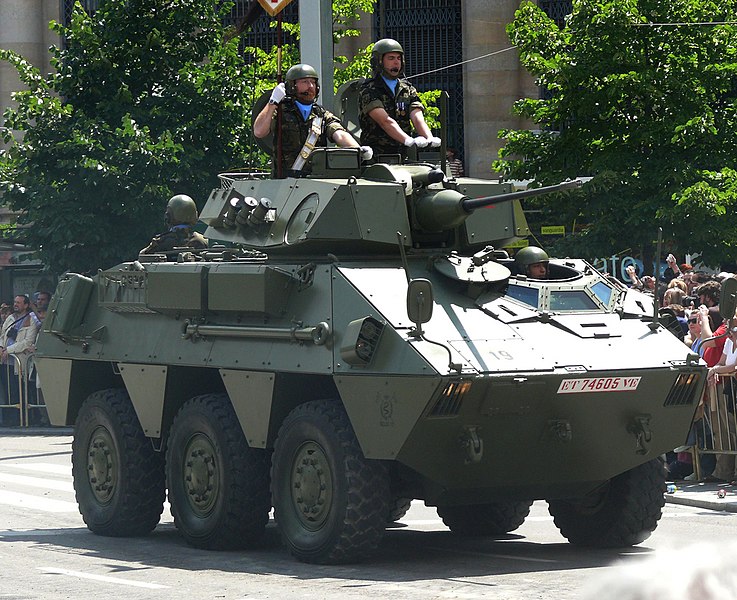
The Pegaso VEC M1 is an armored vehicle produced by the Spanish company Pegaso, which is a subsidiary of the multinational defense contractor, Iveco. The VEC stands for "Vehículo de Exploración de Caballería," which translates to "Cavalry Reconnaissance Vehicle" in English. The Pegaso VEC M1 is designed for military reconnaissance and surveillance missions. It features a high level of mobility and protection, making it suitable for various terrains and combat scenarios. The vehicle is typically operated by a crew of two or three, including a driver, a commander, and sometimes a gunner.
The VEC M1 has a steel armored hull that provides protection against small arms fire, shell splinters, and some anti-personnel mines. It offers a certain degree of protection to the crew. It is equipped with a turret-mounted 25 mm Chain Gun (US Bushmaster) and a 12.7mm machine gun, which can be operated remotely by the gunner. This provides the crew with offensive capabilities to engage enemy targets. The 4x4 chassis derived from the BMR and offers good off-road capabilities and can reach a respectable top speed. It has advanced optics, night vision devices, and communication equipment. It was exported so far only to Guyana but it still marketed. All surviving vehicles were upgraded to the M1 standard in late 1990s with a new SCANIA DS9 310 hp multifuel diesel engine and additional armor.
 AMX-30RE Roland
AMX-30RE Roland
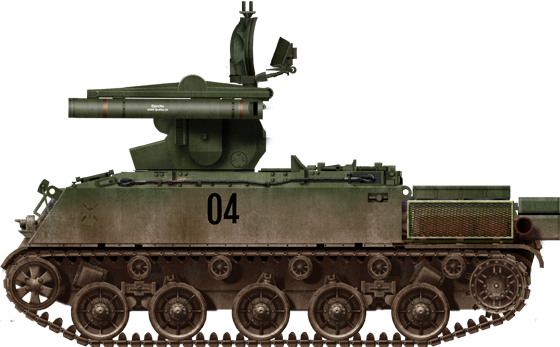
Roland Spanish Roland SPAAML. 18 were manufactured under licence as the AMX-30RE.
Modern Spanish AFVs
 Leopard 2E
Leopard 2E

Leopard 2E Locally-built version of the Leopard 2A6. 308 had to be procured to the Ejercito according to the 1995 agreement with Germany's KMW company. All were to be assembled with at least from 60-70% locally-provided parts and assembled by Santa Bárbara Sistemas from 2003 to 2008. 219 are in service today. Spain decided at some point indeed to get involved in the Leopard 2A5 development that led to the 2A6, a cheaper alternative to the Lince.
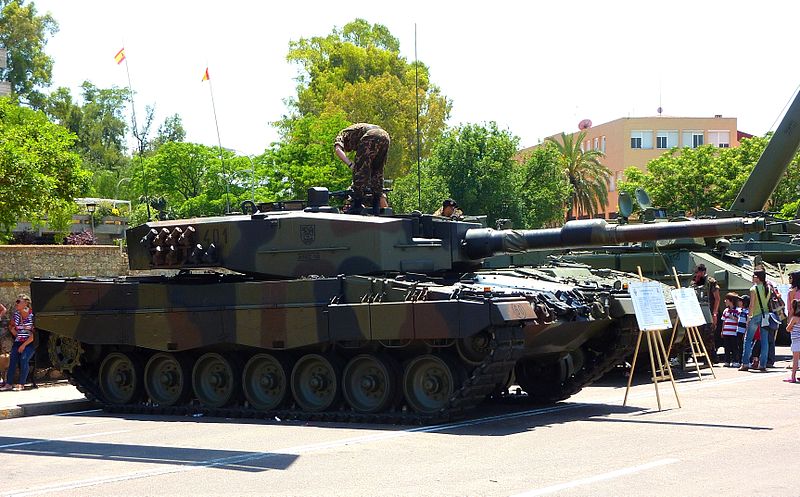
Leopard 2A4: 108 formerly leased and eventually procured according to the 1995 MoU with Germany, and the European need for a common fast reaction unit.
 Centauro B1
Centauro B1
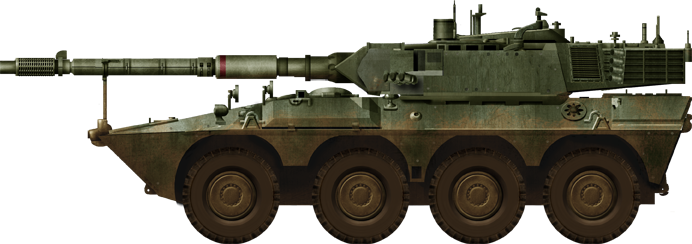
B1 Centauro tank hunters. 84 were purchased back in 1999-2001 and 2004-2006, and given to three reconnaissance regiments batches in 1999-2001 and 2004-2006. They are in service with three Reconocimiento de Caballería “Pavia”, “Lusitania” and “España”. They replaced the AMX-30EM2s. In 2009, a cavalry regiment was sent reinforcing the Spanish contingent of UNIFIL in Lebanon.
 ASCOD Pizarro
ASCOD Pizarro
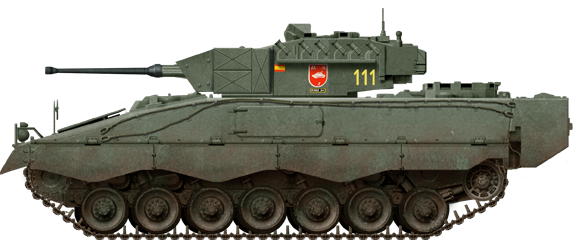
ASCOD Pizarro Spanish standard IFV. So far 354 are in service.
 URO Vamtac
URO Vamtac
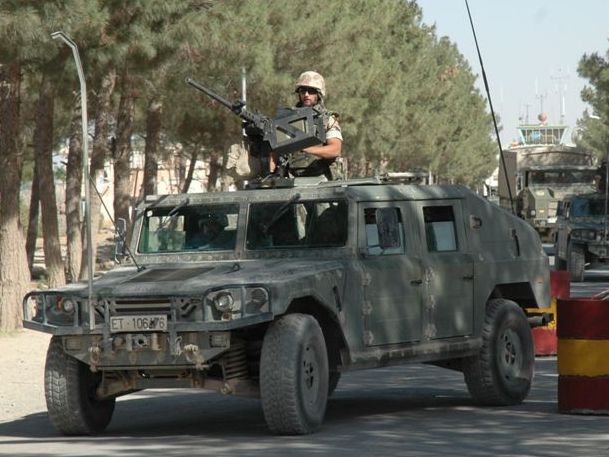
URO VAMTAC Spanish equivalent of the Hummer manufactured by the UROVESA consortium, provides the bulk of light APCs with more than 1,500 provided so far since 1998. It was also exported to 5 other countries and evaluated by 2 more. Article expected.
Miscellaneous:
Also for remote, mountainous regions, the Spanish Army currently operates 90 Bandvagn 206 articulated APCs. Light infantry/recce means are provided by 500 Italian-built Iveco LMVs, while 180 South African RG-31 MRAPs were produced for service in Afghanistan and has been purchased since. Also 1,500 all-purposes Santana Anibal unarmoured all terrain 4x4 utility vehicles were procured (the company was liquidated since). These are essentially similar to the Land Rover models of the 1980s.Sources/Read More
ejercito.defensa.gob.esCarros_de_combate_del_Ejercito_de_Tierra_espanol
Spanish Tanks on Tank Encyclopedia
globalsecurity.org
militarytoday.com
en.wikipedia.org
Video: 100 years of Spanish Tanks

Cold War Tanks


































Cold war tanks posters

Cold War Main Battle Tanks

Cold War Soviet Army
Museums, Movies, Books & Games
The Tanks and Armor in pop culture
Tanks and armored vehicles in general are only really grasped when seen first person: The mass, the scale, it's all there. Explore also the way tanks were covered in the movie industry, in books and in video games.Movies:
Best tanks movie on warhistoryonline.com
On imdb.com
On bestsimilar.com/
miltours.com
liveabout.com/
watchmojo.com
Video Games:
pcgamesn.com
historyhit.com
levvvel.com
vg247.com/best-tank-games
mmobomb.com/
alienwarearena.com
